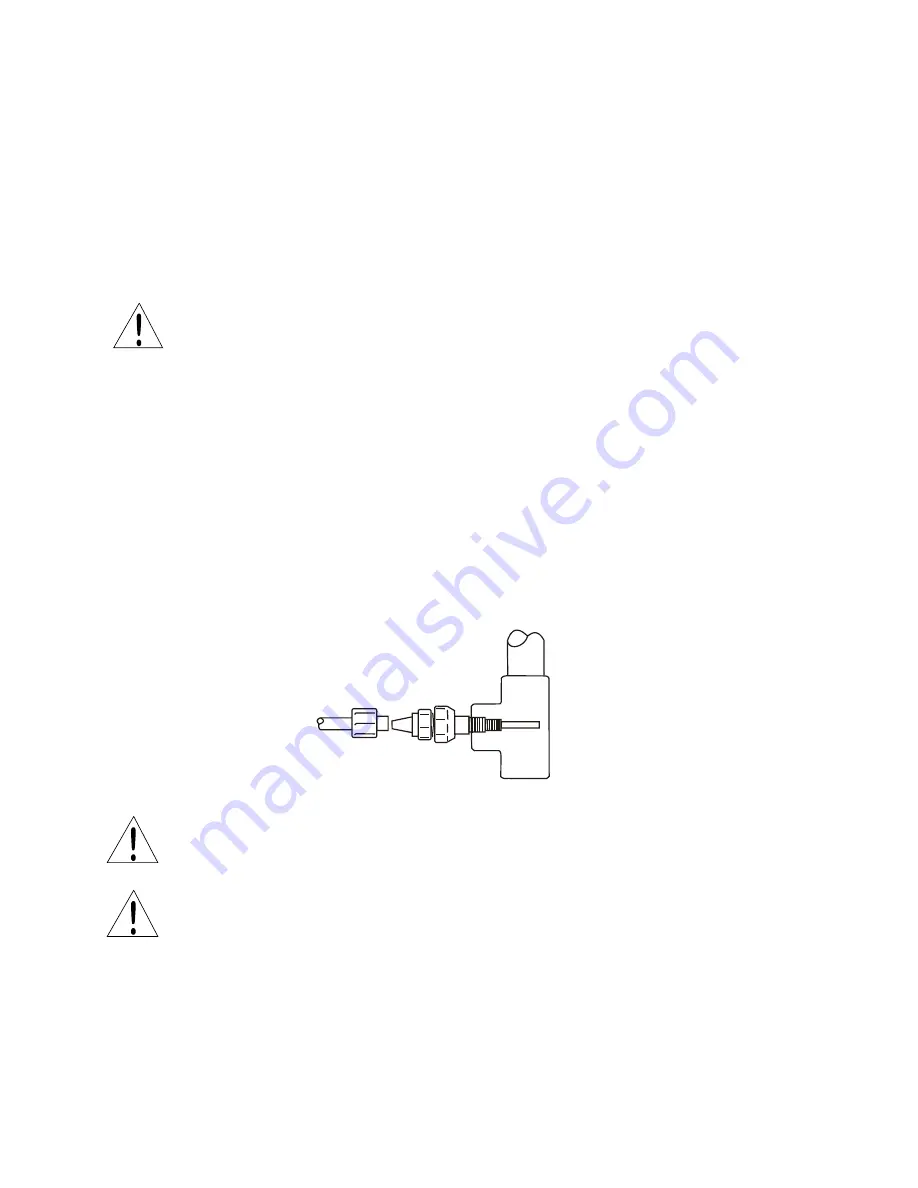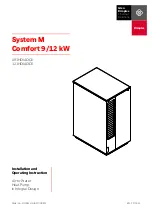
10
2.5
Installing Injection/BackPressure Valve
A fitting or tee with 3/8” or 1/2” NPTF threads and with sufficient depth will accept the
injection valve assembly. If required, trim off an amount of the extension tip until it fits into the
fitting or tee. (Fig. 7.)
The position of the injection/back pressure valve can be at any orientation as long as the spring
is retained in the valve. DO NOT REMOVE THE SPRING. Be sure to check and replace the
spring as needed. Attach the tubing following the same instructions in section 2.3, connecting
the supply tubing.
CAUTION:
Some chemicals may have reactions as they are injected into the main flow. For
example, sulfuric acid may react with water causing excess heat. If the chemical is heavier than
water, mount the injection valve as close as possible to vertical coming into the bottom of the
pipe. This will keep the injection nozzle facing up and keep the heavier chemistry from draining
into the pipe and causing adverse reactions within the injection valve and pipe.
In addition to preventing backflow from pressurized lines, the injection valve acts somewhat as a
back pressure valve when pumping into open atmosphere type applications. However, the back
pressure by the injection valve is very low and can vary. The output of the metering pumps is
rated at maximum back pressure and will increase as back pressure decreases dependent on the
specific installation. Additionally, the valve does NOT act as an anti-siphon valve. If siphoning
is a possibility, or if pumping downhill into open atmosphere (open tank), a Walchem
MultiFunction valve or a separate back pressure/anti-siphon valve must be installed.
Note: Siphoning can also occur at the tip of the injection valve because of the high flow rate in
the main pipe flowing past the small injection nozzle (venturi effect). In this case, an anti-
siphon device must be installed to avoid over feeding or siphoning of chemistry.
2.6
Electrical
WARNING Risk of electrical shock!
This pump is supplied with a grounding conductor
and grounding-type attachment plug. To reduce the risk of electrical shock, be certain that it is
connected only to a properly grounded, grounding type receptacle.
CAUTION!
The electronics within the pump can be damaged by excessive surges in voltage.
Do not install the pump near high-power electrical equipment that generate high surge voltages.
Avoid branch circuits that also supply power to heavy or other equipment that could generate
electrical interference. If necessary, install a surge suppression device (such as a varistor with a
resistance greater than 2000A) or a noise reducing transformer at the pump’s power connection.
Figure 7
Injection Valve
Trim back as needed
to fit tee or fitting
Injection/Back Pressure Valve














































